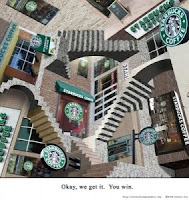Глава одиннадцатая(eleven): A Girl Who Lost Half of Her Brain(LITERALLY)
Michelle born with only a right hemisphere. Although Michelle has some difficulties such as understanding abstract thought and visual-spatial activities, she can enjoy life as mostly normal people can. Her right hemisphere must not only carry out the key functions of the left but also economize on its "own" functions. In Michelle, the right hemisphere had to evolve without input from the left and learn to live and function on its own.
Her right wrist is bent and a bit twisted, her right leg need a brace to support, her right eye is blind. The hyperdevelopment of hearing compensates the lack in vision. Her hearing is so acute that she can clearly hear her parents talking in the kitchen when she is up-stairs at the other end of the house. But this sensitivity has a cost. In traffic, when a horn blares, she puts her hands over her ears, to avoid sensory overload. She is also supersensitive to touch. At frustrating times she uses nonsense words, not so much to communicate as to discharge feelings.
Fortunately, Michelle has supermemory. She able to retrace the date, day and memory as far as 18 years vividly. Sometimes savants have unusual ways of representing experiences. The Russian neuropsychologist Aleksandr Luria worked with a mnemonist, or memory artist, "S", who could memorise long tables of random numbers. S had a photographic memory, going all the way back to infancy, and was also a "synesthete," so that certain senses, not normally connected, were "cross-wired." High-level synesthetes can experience concepts, such as the days of the week, as having colours, which allows them to have particullarly vivid experiences and memories. S associated certain numbers with colours and, like Michelle, often could not get the main point. But Michelle associates the days of the week with scenes rather colours.
Jordan Grafman, chief of the Cognitive Neurosciences Section. Grafman studied the relationship of preinjury intelligence to that after recovery. He found that aside from the size of the wounds and the location of the injury, a soilder's IQ was a very important predictor of how well he would recover his lost brain functions. Grafman's data suggested that highly intelligent soilders seemed better able to reorganise their cognitive abilities to support the areas that had been injured.
Grafman's theory provides an explanation of how Michelle's brain evolved. Michelle's loss of brain tissue occurred before there could have been any significant commitment of her right hemisphere. Since she was still developing in her mother's womb, the plasticity was still high so Michelle was saved from certain death. Her right hemisphere, which normally processes visual-spatial activities, was able to process speech because, being partially blind and barely able to crawl, Michelle learned to speak before she learned to see and walk. Each hemisphere tends to specialise in certain functions but is not hardwired to do so.
Grafman thinks that her superior ability to remember events may be related to the fact that she has only one hemisphere. Normally two hemispheres are in constant communication. Each not only informs the other of its own activities but also corrects its mate., at times restraining it and balancing the other;s eccentricities. What happens when that hemisphere is stricken and can no longer inhibit its partner?
Since there are many thousands of brain activities going on at once, we need forces to inhibit, control, and regulate our brains in order to keep us sane, organised and in control of ourselves so we don;t "ride off in all direction at once."
http://www.thecoolist.com/autistic-artist-draws-the-manhattan-skyline-from-memory/
http://hubpages.com/hub/Left_Right_Brain
























